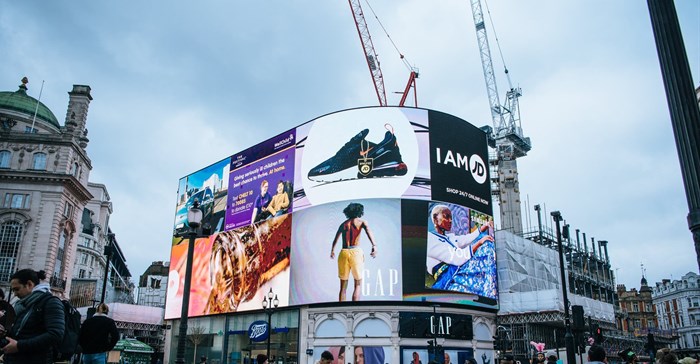
This is according to BrandMapp's 2022 research on which media platforms are resonating with consumers in South Africa. The research was
conducted on the top 30% of the adult population or people who earn over R10 000 a month.
“A younger audience is more engaged, and they spend more and they do more,” said Brandon de Kock, director of storytelling at WhyFive.
Nineteen per cent of those under 25 are more likely to remember a digital billboard on the roadside while only 9% of those over 65 are likely to remember the ad.
Twenty-nine per cent of those under 25 are likely to remember a traditional billboard on the roadside while only 15% of those over 65 are likely to remember the ad.
The data sheds insight into which consumers brands should be focusing on through this advertising medium.
From 2020 to 2022, there has been a radical growth in how many people have become connected to the internet using fibre. This is a 100% growth from 20% to 40%.
De Kock said there is a predictable correlation between income and access to fibre with only 26% of households earning between R10,000 and R15,000 being connected to fibre, while 69% of households earning more than R100,000 are connected to fibre.
Younger people are less likely to listen to the radio, with people over the age of 35 more inclined to listen to the medium.
Afternoon drive radio has been highly affected in the middle class. In 2019 57% of middle-class respondents said they listened to afternoon radio and this dropped to 24% in 2021.
Covid-19 caused a 10% decline in radio listenership and now 62% of respondents listen to the radio in totality. This is because during lockdown people found alternative forms of entertainment such as streaming.
Although podcasts are not a popular medium yet, data shows that their usage is increasing In 2020, 45% of respondents had never listened to a podcast before and this has dropped to 33%.
“We are starting to see an uptick in podcasts. That is a fairly large growth, a 12% growth in absolute terms,” said de Kock.
Forty per cent of respondents under 25 listens to podcasts on a weekly basis.
In 2022 Netflix continues to be the most popular streaming channel with 63% of respondents saying they use it; this is an increase from 41% in 2020. Showmax is not far behind with an increase from 26% in 2020 to 41% in 2022.
These statistics show that people continued to renew subscriptions.
“The overall picture is that streaming has never had more impact,” he said.
In 2021 86% of respondents under 25 said they use Instagram while only 25% of those over 65s used the platform. By 2022 the use of Instagram by those under 25s had gone down to 69%.
De Kock said this is because of the rise of TikTok’s popularity for those under 25.
Seventy per cent of people respondents say they read newspapers but half of them will not pay for it.
Their research found that trust in media such as Facebook, Instagram and YouTube declined because of the rise in fake news during the Covid-19 pandemic.
In 2020 trust in Facebook was at 34% and this declined to 11% in 2021. However more traditional forms of media such as TV, newspapers and radio kept the trust of its consumers.
Television continues to be the most trusted form of media across all age groups.
“Digital media has a long way to go in the concept of trust,” concluded de Kock.
